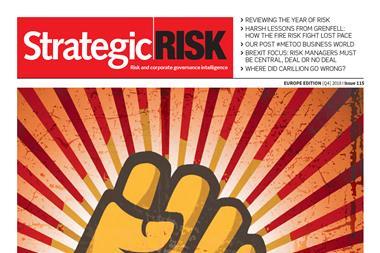Digital disruption, namely using new technology to compete with corporate dinosaurs, wiped out the likes of Blockbuster Video. Digital transformation provides a practical alternative
Part of a technology risks series supported by

Digital technology is transforming approaches to business. Irrespective of the sector, when it comes to staying ahead through innovation, the message is ‘be quick or be dead’.
“In the list of Fortune 500 companies in 2000, 52% have either gone bankrupt, been acquired or ceased to exist,” says Neil Sholay, senior director of products and industries, EMEA at Oracle. “In most cases, this has happened owing to digital disruption of their existing business model. It might have been not called that then, but that’s what it was.”
Digital disruption is the use of new technology – or a business model based on new technology – to significantly affect an existing value proposition.
“Probably the most famous examples are when Netflix entered the video streaming market and destroyed Blockbuster in the process, or when Uber entered the taxi market globally and severely affected local providers,” says Sholay. “A similar effect may well happen with Amazon Dash.
“This hasn’t yet launched, but it looks as though it could be huge. The technology resembles a little microphone, and it enables users to scan a grocery item in their home – say a can of beans needs replacing – or even talk to it and order whatever is missing immediately. It’s turning the entire model of grocery shopping on its head because instead of getting a big shop in, products are delivered as and when required, all the time.”
Of course, this kind of development is not happening in all businesses all the time. If it were, the market would be in chaos. “Most of the conversations I have tend to start with digital disruption and move on fairly quickly to digital transformation,” says Sholay. “What is happening in 99% of the organisations
I work with is that they are looking at the potential disruption posed by new technology and changing the way they work. They are certainly moving faster than they would have done otherwise, but this deals with transformation, not destruction.”
Everyday business
Innovations might, for instance, involve the use of data, drones, robotics or identity management. “Organisations are giving digital some kind of leadership role, and about 30% of the companies
I deal with now have a chief digital officer,” says Sholay. “It varies from industry to industry and territory to territory, but it is happening.
“The best examples are incorporating digital into their everyday businesses. In some companies, the board is handing down tasks to their digital innovation groups, giving them areas to innovate around and tasking them to produce results. They may even be asking them to compete with each other in doing so. This is a totally different way of doing business.”
These changes are not only limited to the kind of consumer-focused brands usually associated with new technology.
“Siemens, Bosch and many other manufacturers have invested heavily in big data, robotics and technology in general because they have seen that not only can new technology make their businesses run better, it can also really compress the amount of time it takes them to get a product to market.”
For example, robotics firm ABB recently launched YuMi (you and me), the world’s first dual-arm robot that can work safely with people without having to be separated from them by a safety cage. It is hoped YuMi will revolutionise monotonous tasks such as small-parts assembly, which is hard to repeat with consistent quality and precision.
Some of the anything-is-possible attitude of start-ups is trickling up to the large multinationals. “They are looking at what is happening and asking: ‘How can we be more like a start-up?’ However, the real problem they have in doing that is the sheer scale of their operations.
“Time and time again, the big barriers are culture and behaviour. How does Bank of Scotland get 5,000 tellers to start thinking digitally?
“Large companies are beginning to understand and this is why HR are coming to the workshops I run, because they are realising that they need to make changes to the way they recruit and train staff.
“It’s no good launching an amazing app if the staff in the call centre just don’t understand how it works when someone calls to ask for help.”
Transforming customer experience
According to new research by MIT and CAT, about 44% of businesses are using digital to transform their customer experience offering, about 30% are using it for operations and 26% for short order innovation, which is genuine ‘disruption’.
“We are at the stage where every business is now being affected by technology,” says Sholay.
“If an organisation is not looking at what digital can do for it in all areas of its operations, whether it is B-C, B-B or even a government department, then it is putting at risk its very livelihood”.




















No comments yet